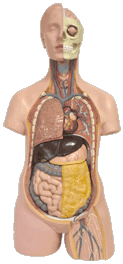At WiseGEEK, we're committed to delivering accurate, trustworthy information. Our expert-authored content is rigorously fact-checked and sourced from credible authorities. Discover how we uphold the highest standards in providing you with reliable knowledge.
What is Reiki Distance Healing?
Reiki distance healing is a method derived from the practice of standard Reiki. The word Reiki means “universal life force” in Japanese. Reiki practice involves conducting universal life force energy through a recipient, healing him or her on a physical, emotional and mental level. Practitioners believe that Reiki can help to develop a healthy spiritual presence as well. Reiki energy is thought to be unbound by space and time and is, therefore, practical for distance healing sessions where the practitioner does not have to be physically present.
The practice of Reiki distance healing is sometimes thought to be even more powerful than standard physical Reiki practice. This is due, in part, to the practitioner utilizing the power of intention before a distance session. All Reiki practice uses intention, but Reiki distance healing modalities focus on this aspect, which some say is the reason there is accelerated success. It is thought that Reiki can be sent to anyone at any time. Reiki practitioners can utilize healing energy methods even when the recipient is sleeping or unaware.

A Reiki distance healing session starts with the practitioner doing healing Reiki on herself in order to prepare for the therapy. Practitioners contend that this is an important step because it is thought that Reiki does not rely on energy from within, but needs to be channeled straight from a divine source. Often times, the practitioner has conducted a phone interview with the recipient before the start of therapy. This consultation can help to coordinate a Reiki session, as the practitioner is said to be able to work more effectively when the recipient is in a receptive state. The practitioner can ask questions about mood and state of mind, and the recipient can request specific intention.
The practice of Reiki was founded by Dr. Mikao Usui, a priest employed at a small university in Japan, at the beginning of the 19th century. He researched the method and wrote about his profound observations until his death, leaving an abundance of literature upon which Reiki practitioners draw from today. The efficacy of Reiki healing has been the subject of numerous studies. A study done by the American College of Physicians concluded that further research was warranted in the area of distant healing modalities, which include Reiki, prayer and other types of energy healing practice. The study purports that over 57 percent of patients among 23 separate trials showed tangible positive benefits from these practices.
AS FEATURED ON:
AS FEATURED ON:










Discuss this Article
Post your comments